Home / Grammar / Verb Tenses / BE Simple Present Tense About We are dedicated to creating and providing free, highquality English language learning resourcesLook at the table to see how to form sentences in the present simple tense using the verb to be You can see that there is a short form (contraction) used when writing the verb to be, and an apostrophe is used to form it I am = I'm, She is = She's, etc Word Order When Using "To Be" in Present Simple TensePresent Continuous / Progressive Simple past tense I work in a bank You get up early every day She works in a bank She studies at university He g oes to the movies every Wednesday It rains every afternoon in summer We play baseball on Friday nights
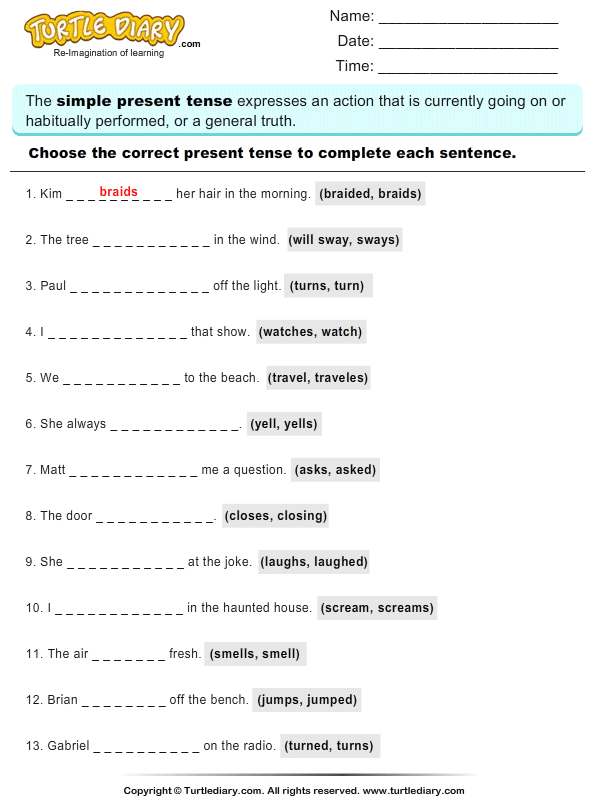
Choose The Correct Present Tense To Complete The Sentence Worksheet Turtle Diary
Be simple present tense form
Be simple present tense form-The present simple form of the verb is identical to the base form in all persons except the third person singular The third person singular is formed by adding s to the base form Note the changes in spellingThe present simple tense varies it's form depending on whether it is being used with the third person singular, other verbs, or the verb to be It is used for repeated events, general facts, and with state verbs



Simple Present Tense Simple Present Tense I
The Present Simple Tense (also called the Simple Present Tense) Simple present tense with 'be' The verb 'be' is different from the other verbs in this tense Let's look at 'be' first Here's the positive form (positive means a normal sentence, not a negative or a question This is sometimes called 'affirmative')Am, is and are;Simple preSent pArt 1 LEARN 4 Circle the correct form of the verb to complete each sentence 1 Doctor Moffett love / loves his job 2 He study / studies ants 3 A salesperson sell / sells products for a company 4 You and Anita work / works on weekends 5 Nurses help / helps people 6 We write / writes science books 7 Our office close / closes at 700 pm
Present Simple introduction and form The Present Simple is a verb tense which refers to general present time Tenses = a verb form which shows the time of an action or event Lives (present);The past participle always stays the same Only the form of be changes The subject and verb must always agree in number the new studentPositive I am I'm from Japan you / we / they are you're / we're / they're from Brazil he / she / it is he's / she's / it's from India Negative I am not I'm not married you / we / they are not You're not / You aren't We're not / We aren't They're
Present simple Mixed forms PDF 6 Activity to practise the past simple tense and to practise listening and pronunciation skills Passive voice with simple present and past By loveteaching Students are given the form and usage on the passive voice – example of sentence transformation includedMain verb be subject Here are the forms of the main verb be that we use to construct the tenses base past simple past participle present participle ing present simple be was, werePOSITIVE ( AFFIRMATIVE ) FORM () Subject TO BE ( am / is / are )



Simple Present Tense With To Be English Study Page




Simple Present Tense Form And Use English Esl Powerpoints For Distance Learning And Physical Classrooms
How to Formulate the Simple Past For regular verbs, add ed to the root form of the verb (or just d if the root form already ends in an e) Play→Played Type→Typed Listen→Listened Push→Pushed Love→Loved For irregular verbs, things get more complicated The simple past tense of some irregular verbs looks exactly like the root formThe simple present is a verb tense with two main uses We use the simple present tense when an action is happening right now, or when it happens regularly (or unceasingly, which is why it's sometimes called present indefinite) Depending on the person, the simple present tense is formed by using the root form or by adding ‑s or ‑es to the endThe verb '' TO BE ''has three forms in the present;




English Grammar The Simple Present Lesson 2 Talk About Habits And Daily Routines Learn English With Africa
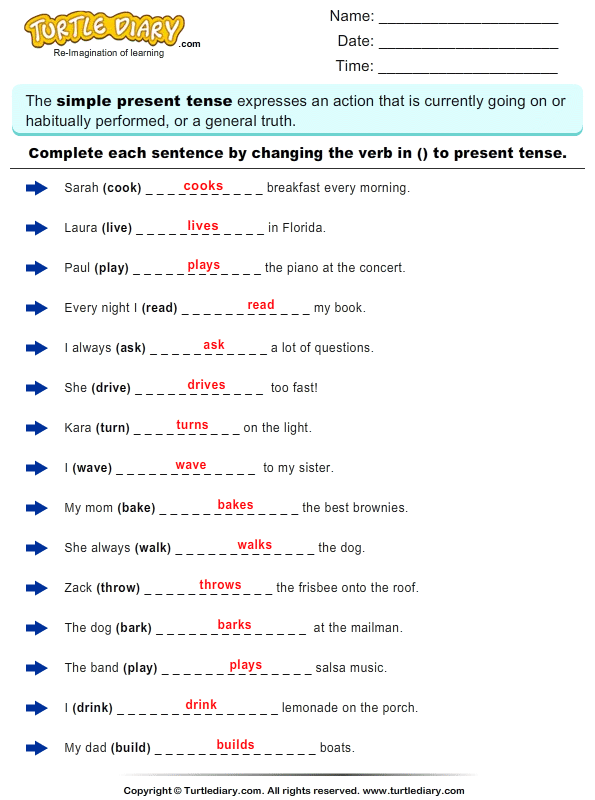



Present Tense Lessons Blendspace
Simple present Question 5 Remi was sleeping when Mother came home Answer past continuous Question 6 Anya completed the work on time Answer simple past Perfect Tenses Present perfect tense We form the present perfect tense with the auxiliary verb havelhas the past participle form of the verbIn this video I will teach you how to use the present simple tense in English This tense is very important in English and you will use it often!Using the verb 'to be' in the simple present tense;
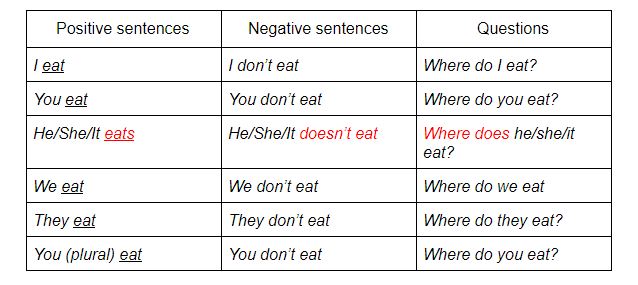



What Are The 4 Present Tenses In English And How Do You Use Them Oxford House Barcelona




Present Simple Tense Detailed Expression Simple Past Tense English Study Simple Present Tense
About Press Copyright Contact us Creators Advertise Developers Terms Privacy Policy &We use the verb to be in the simple present with either a noun, adjective or prepositional phrase We can also use a short form (a contraction) with the simple present I'm tired (I'm = I am) This chart shows the form of the verb to be in the positive (affirmative) form I am NicoleThe principal use of the simple present is to refer to an action or event that takes place habitually, but with the verb to be the simple present tense also refers to a present or general state, whether temporary, permanent or habitual I am happy
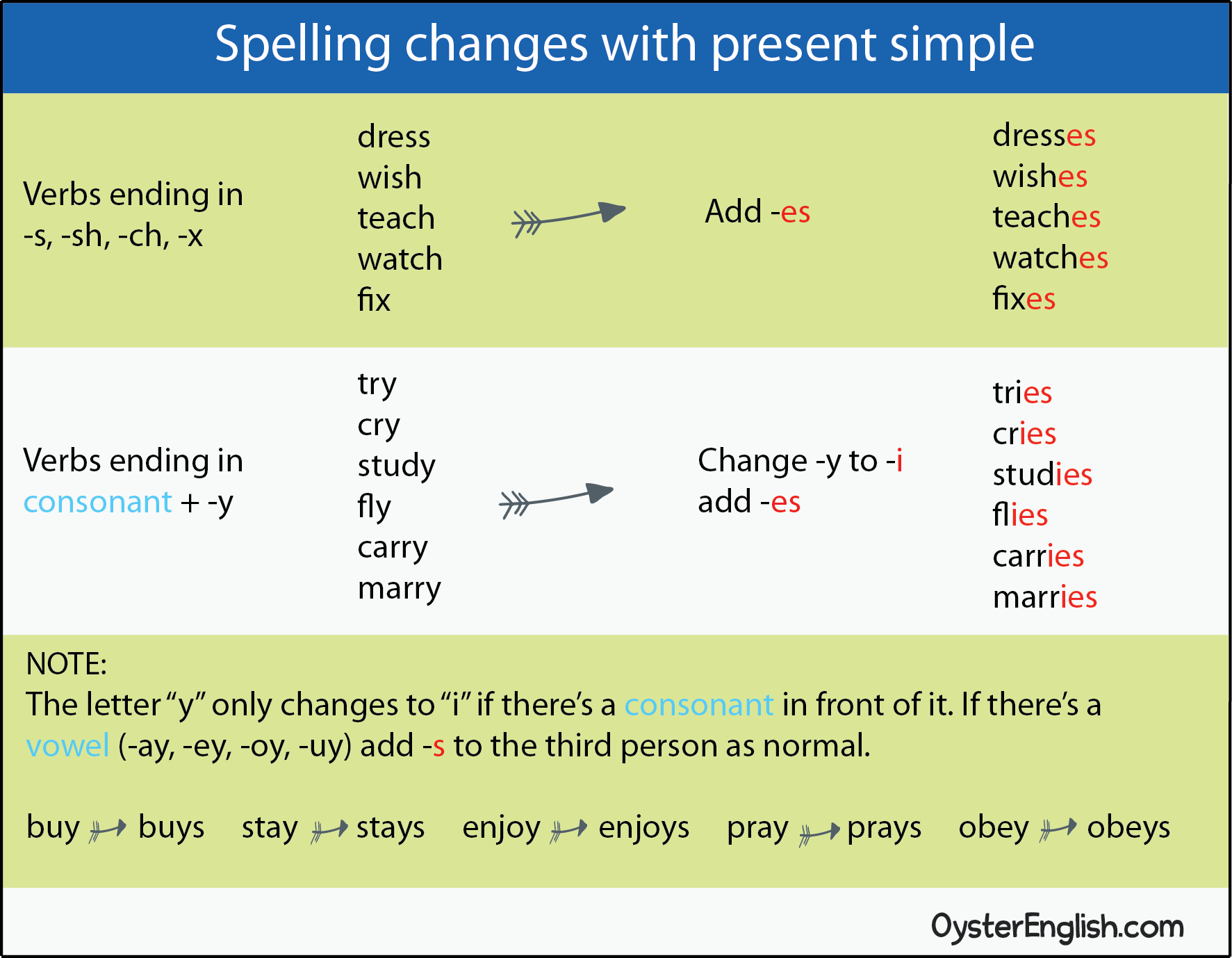



All About The Present Simple Tense




The Simple Present Tense Useful Usage And Example Sentences Esl Forums
Simple present tense (present simple tense) is a verb tense that describes the events and situations that do not change " Do " and " does " are the auxiliary verbs of simple present tense However, " do " and " does " are not used in positive sentences They are used only in negative and question sentences The auxiliary verb " does " is used for third person singular (Simple tense is a category of verb tense used to express facts or habitual activities It covers the simple past tense, the simple present tense, and the simple future tense This page has examples of the simple tenses, explains how to form them, and has a printable and interactive exercise worksheetThe Simple Present Tense While the "simple present tense" may sound intimidating, this really isn't the case You use this tense naturally all the time The rules and applications are as simple as the name is not So take three deep breaths and read on It all comes down to the verb or "doing word"
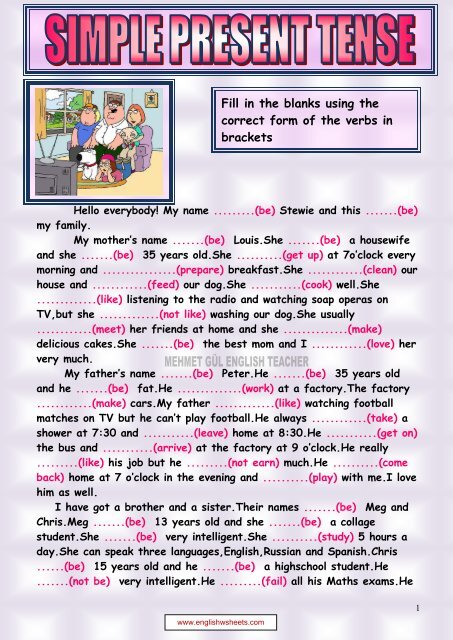



Simple Present Tense Reading 1



Simple Present Tense Simple Present Tense I
Will play (future)Tenses are changes in verb form which give "signals" about time and duration of an action or event, and other informationSafety How works Test new features Press Copyright Contact us CreatorsRules of Positive Sentence in Present Simple Tense I have already told you the structure of the Positive sentence (Subject main verb/present form of the verb) in Present Simple Tense But while forming a positive sentence, you have to be aware of the subject too much If the subject is a 3rd person singular number then you have to add 's



What Is The Simple Present Tense Grammar Lesson




Simple Present Tense What Is The Simple Present Tense
Simple present tense with 'be' The verb 'be' is different from the other verbs in this tense Let's look at 'be' first Here's the positive form (positive means a normal sentence, not a negative or a question This is sometimes called 'affirmative') Positive Positive Short FormThe tenses simply show the time of an action Simple Present Tense indicates an action which happens in the present, but it isn't necessary for actions to happen right now Simple present tense indicates, unchanging situations, general truths, scientific facts, habits, fixed arrangements and frequently occuring eventsIn this form of the present tense, the verb form will indicate an activity that has been completed The present perfect is used to indicate a link between the present and the past The time of the action is before now but not specified, and we are often more interested in the result than in the action itself




English Tenses Simple Present Tense First Second Third Person Singular Engli99




Present Simple Tense English Learners Facebook
In the present tense, there are are two Present Simple verb forms the verb to be or other verbs With the verb be we use am, are, and is The negative is formed by adding not to the verb is not (isn't), am not and are not (aren't) Other verbs in the Present Simple verb form in the 3rd (third) person singular we add "s", "es" orTense is the form of a verb that shows when something happened, is happening or is going to happen There are three main tenses Present tense things that are true when the words are spoken or written Example She goes to schoolIn this sentence, goes shows that it is a present tense It suggests that she regularly goes to schoolThe verb be in English am, are, is Simple Present Online Exercise




Rules Of Tenses In English Language Bankexamstoday




The Negative Form Of The Simple Present Tense Worksheet
The simple present is the most common and useful verb tense in English It is used to talk about repeated actions and to describe people or states of being Read about the rules for using the simple present tense, how we form it, and tons of example sentences!We form the passive with be past participle (3rd form of the verb) In the present simple, the passive is am / is / are past participle (3rd form of the verb) Remember!We use the simple present tense for anything that happens often or is factual Here are a few examples I go to school every day We play




English Grammar The Simple Present Lesson 5 Rules For The Simple Present Tense Learn English With Africa
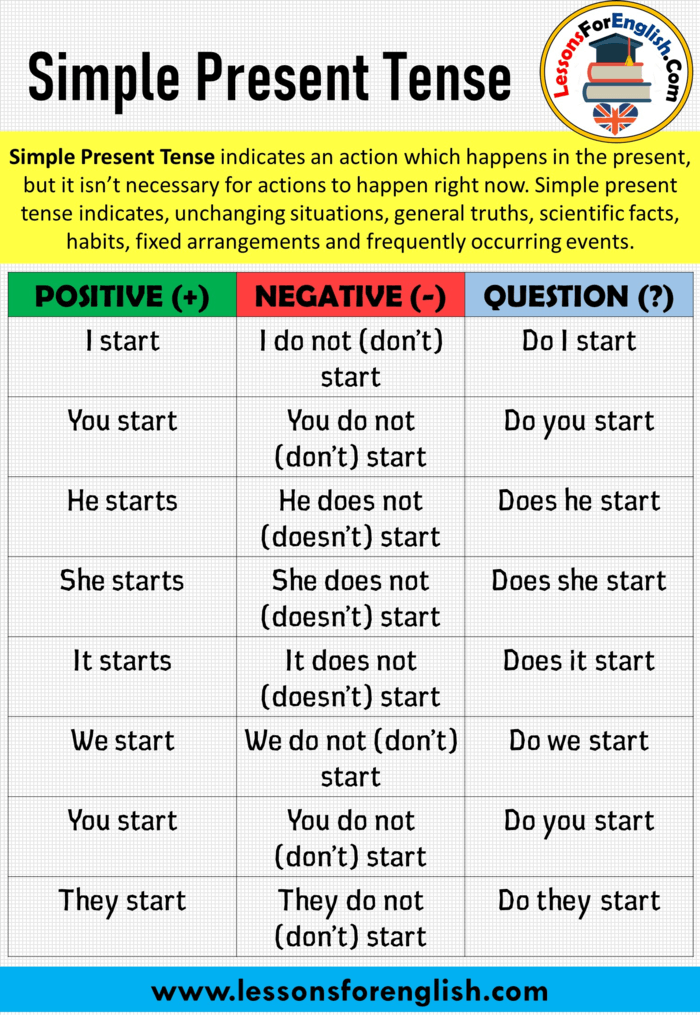



Simple Present Tense Positive Negative And Question Sentences Lessons For English
If two actions of the future are being talked in a single sentence, one of the actions should be in simple present tense and the other in simple future tense They shall go when the car arrives Ravi shall eat once the food arrives Tip Whenever the following words are present in the sentence, simple present tense should be usedTo BE in the Present Simple Tense Level elementary Age 817 Downloads 5 the verb to be in Present Simple am, is, are Level elementary Age 3100 Downloads 162 Rewrite the sentences using the interrogative and negative forms a) I am an English student I NThis is the present continuous tense There is no information about the completion of the task It started sometime in the near past and is still going on In the present continuous tense, each verb has two parts 1Present tense form of verb 'to be' – is/am/are – known as helping verb 2'ing' form of the base verb Eg



1
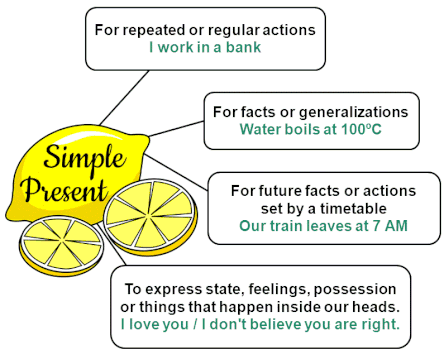



How To Use The Simple Present Tense Juicy English
Formation of short forms of 'to be' in the present simple Beside the regular forms (which means the forms fully written out) it is also possible to use short forms for 'to be' in the present simple (am, is, are)Such shortened forms ('m, 're, 's) are regularly used in spoken language and in written informal English, as it is the case in emails, postcards, and so onTalk for one minute By eve25 In this PPT students have to speak about a given topic for one minuteRulesStudents have to choose a number and click on it It will 37,499 Downloads PRESENT SIMPLE By estrelapolar It's a game to practise this verb tense 37,213 DownloadsThe Present Simple tense is the most basic tense in English and uses the base form of the verb (except for the verb be ) The only change from the base is the addition of s




Forming The Present Simple Tense In English Youtube




What Is Simple Present Tense Formula Know It Info
In this course, "Word Forms and Simple Present Tense," you will learn about different word forms, like nouns, proper nouns, plural forms and singular forms You will learn when to use the articles "a" and "an" You will also learn about the BE verb in English, how to form itIn the present simple tense, the verb ' to be ' is a special verb as it is conjugated in an irregular way It has three distinct forms and can be employed as an auxiliary verb or as a main verb When it is used as an auxiliary verb, it serves to form other tenses, which areThere are two tenses in English past and present The present tense is used to talk about the present and to talk about the future There are four present tense forms Present simple I work Present continuous I am working Present perfect I have worked




Present Simple Tense Definition Examples Rules Onlymyenglish




Simple Present Tense Lesson Plan Munawarunnisa Nazneen
The simple present tense is the way to talk about facts It tells what is always, sometimes, or never true, or what happens over and over It uses the base form of the verb (the infinitive without 'to') except in the third person singular 3rd person singular (he, she, or it one person or thing) ends in
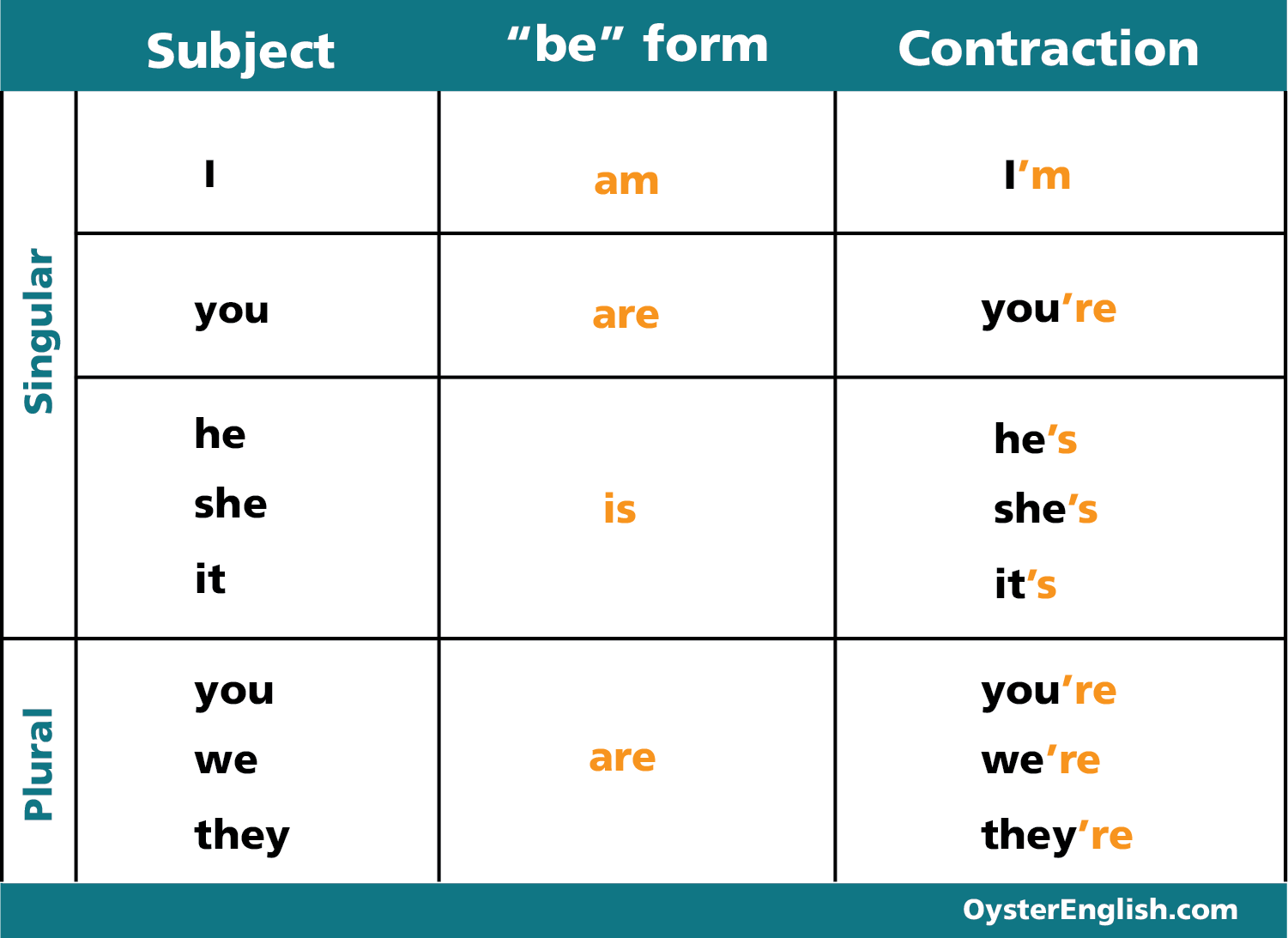



All About The Present Simple Tense




Tenses Present Simple Present Continuous Grammar For Ts
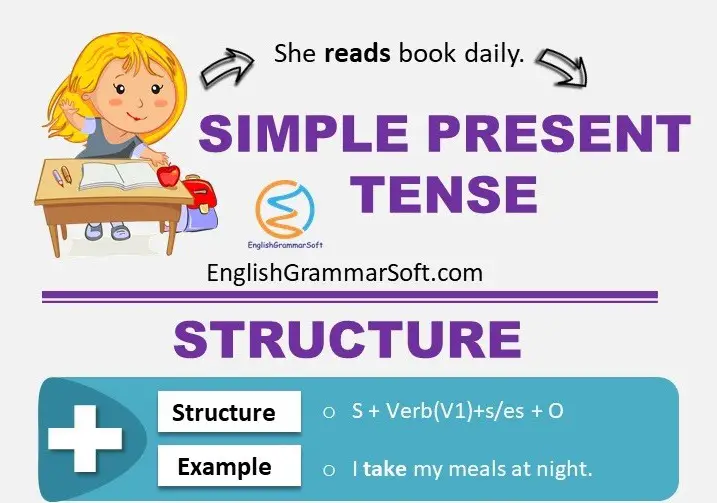



Simple Present Tense Formula Examples Exercises Englishgrammarsoft




Choose The Correct Present Tense To Complete The Sentence Worksheet Turtle Diary




Simple Verb Tenses Simple Tenses 1 Simple Present




Do And Does In English Simple Present Tense Questions Youtube




Routines Likes And Dislikes Remembering Simple Present Tenses Ppt Download
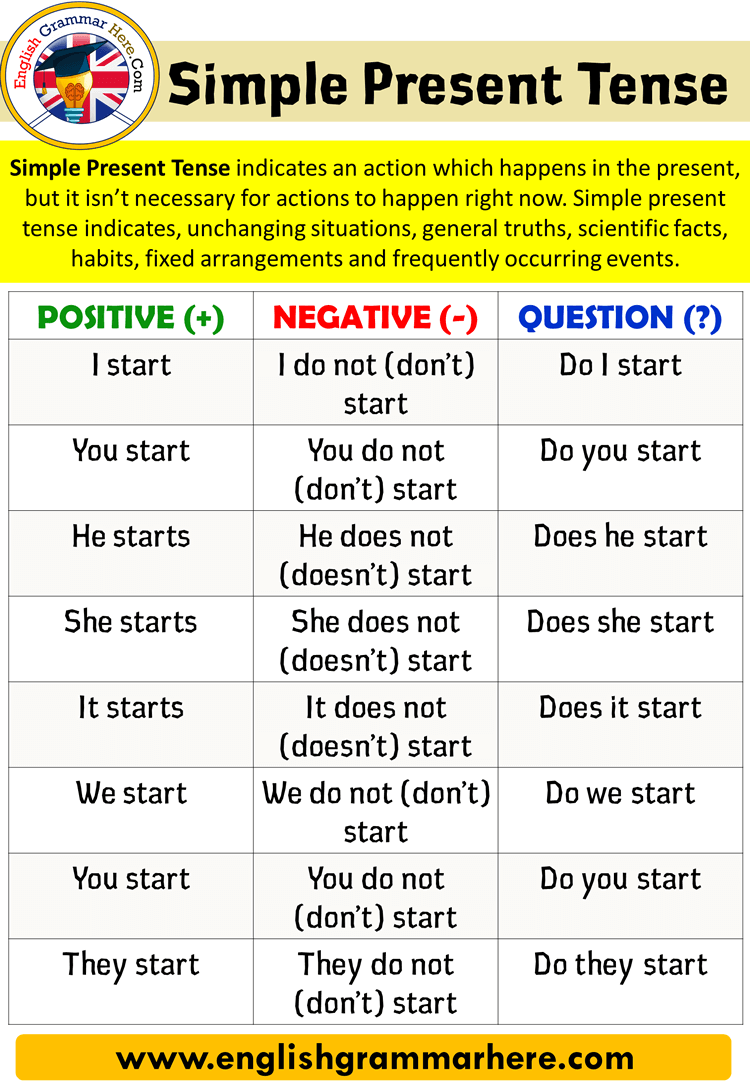



Present Simple Tense Using And Examples English Grammar Here
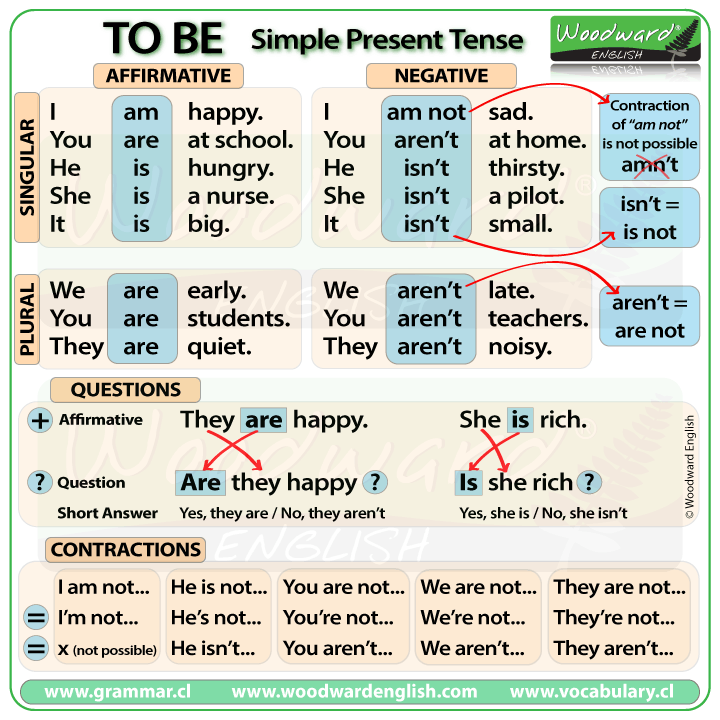



To Be In Present Tense English Grammar
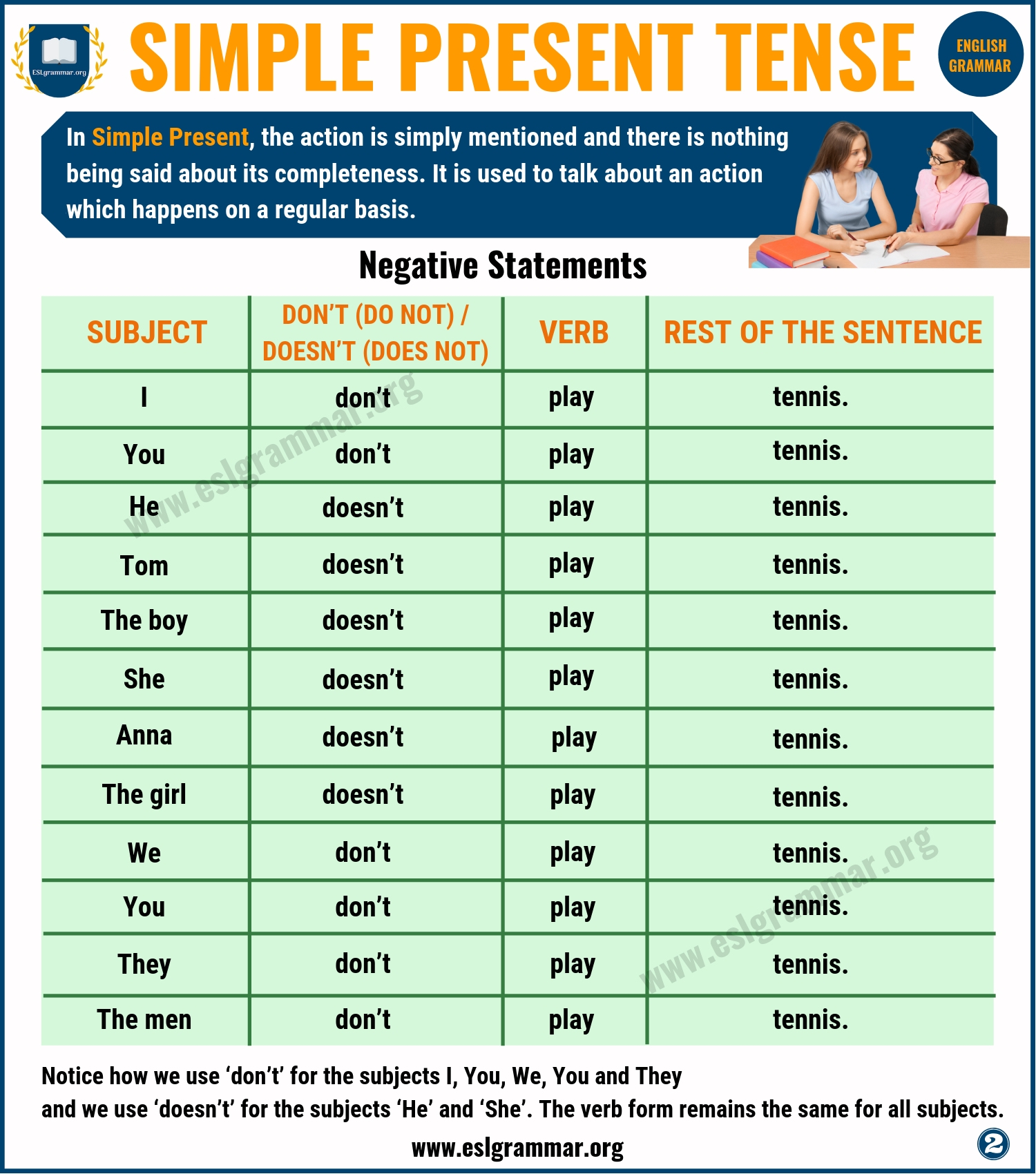



Simple Present Tense Definition And Useful Examples Esl Grammar




Present Tense Definition Rules And Examples Of The 04 Present Tenses 7esl
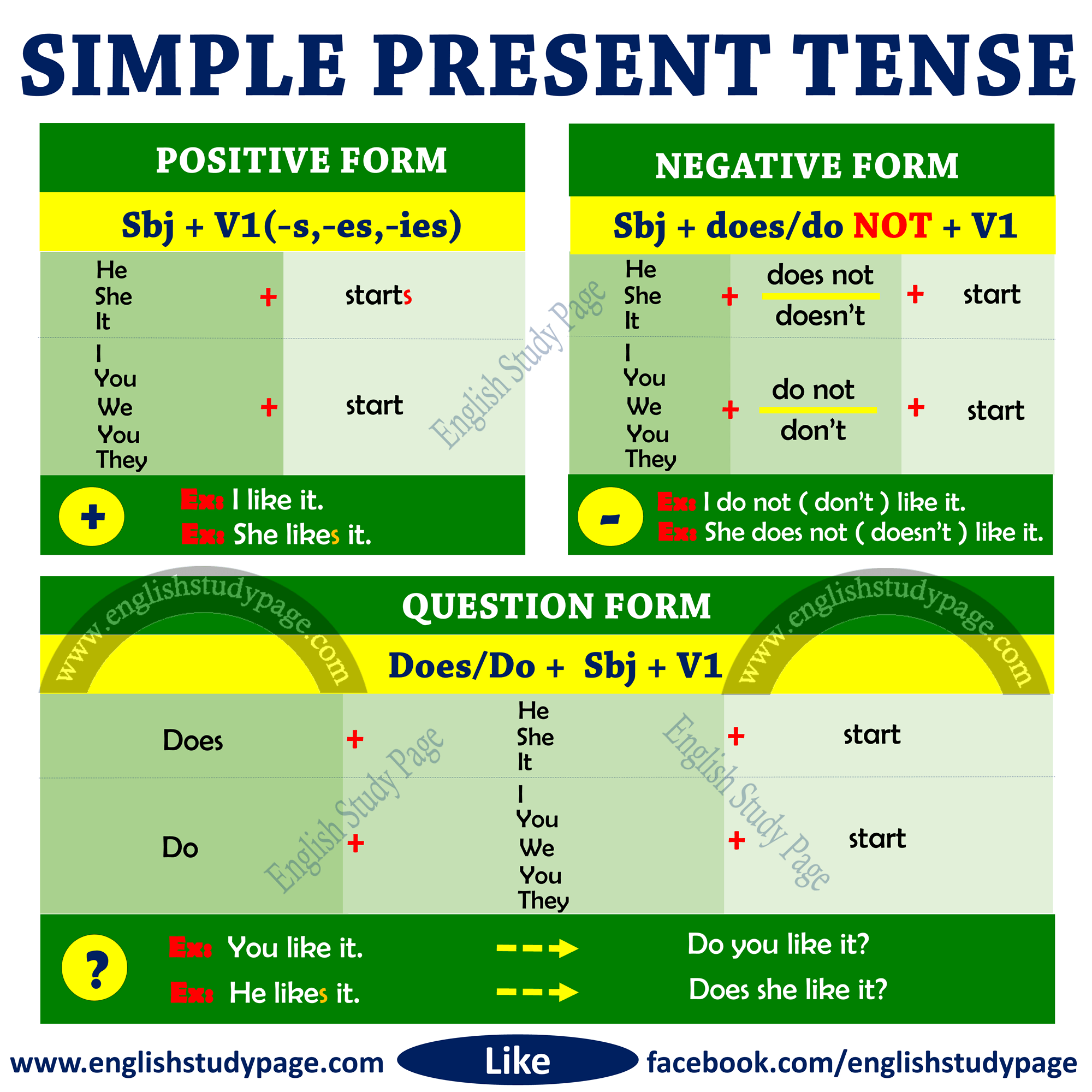



Structure Of Simple Present Tense English Study Page
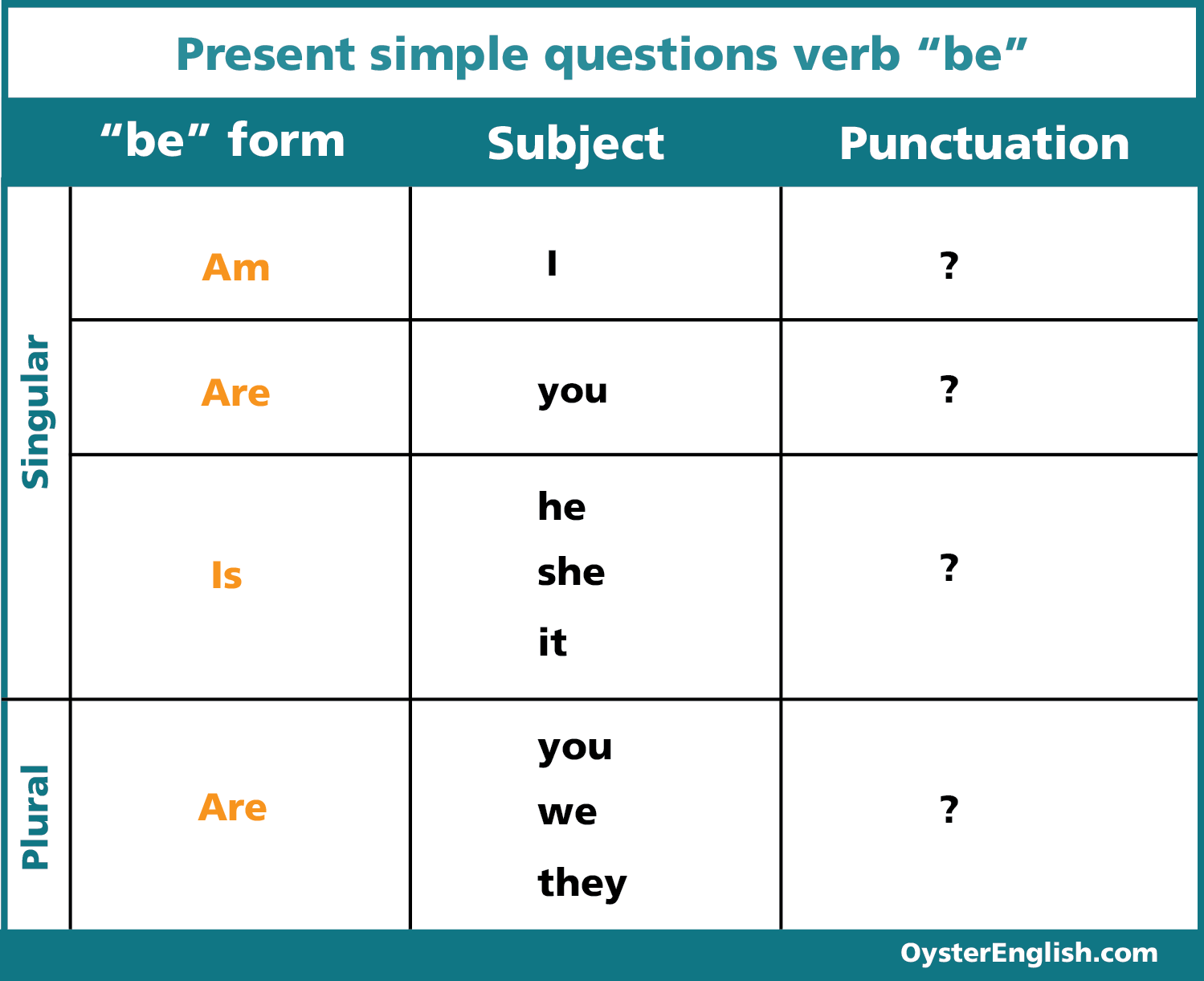



All About The Present Simple Tense



1




Grammar Video For Kids Simple Present Tense Youtube




Forming Verb Tenses




Fill In The Spaces With The Correct Form Of The Verb In Simple Present Tense Fill Online Printable Fillable Blank Pdffiller
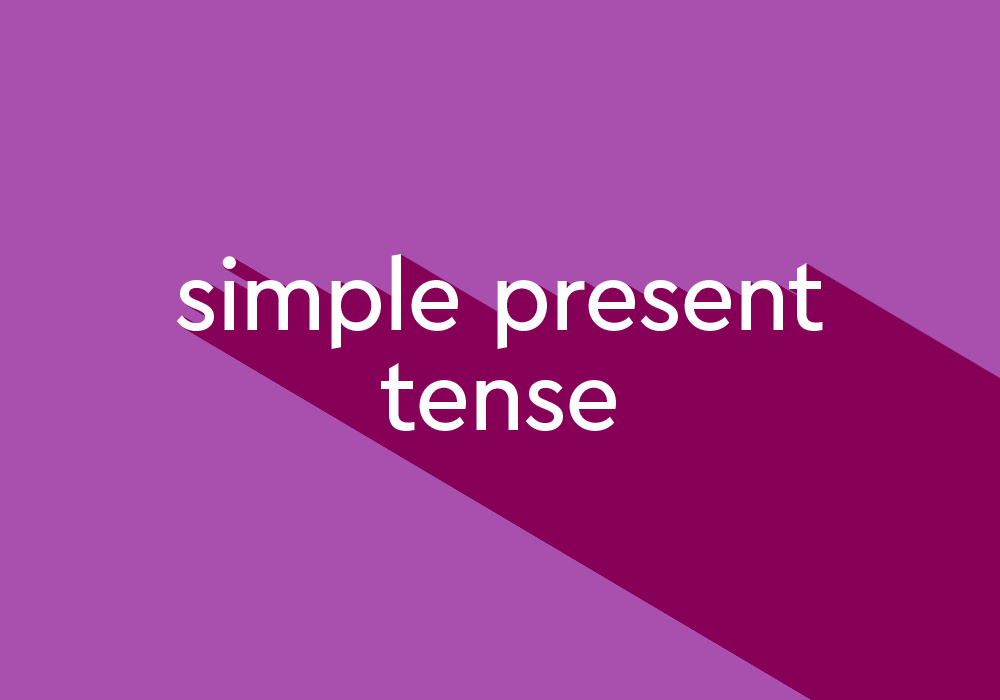



What Is Simple Present Tense Thesaurus Com




Third Person Singular Verbs List With Examples Englishbix
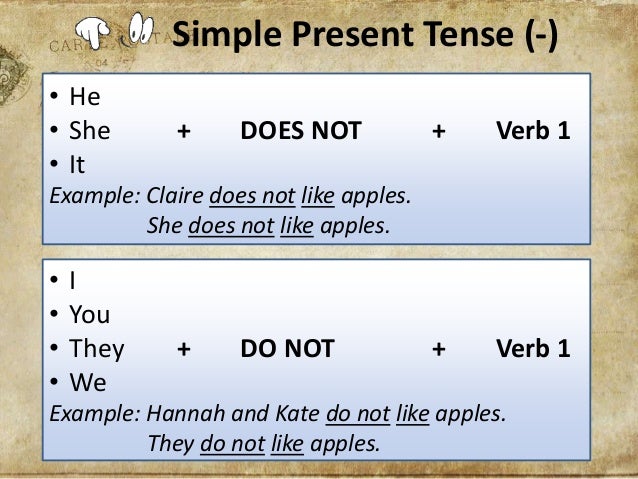



Simple Present Tense Negative Form




What Is Simple Present Tense Of The Verb Know It Info




Present Simple Tense In English Grammar Lesson




What Are The 4 Present Tenses In English And How Do You Use Them Oxford House Barcelona




Present Tense Definition Rules And Examples Of The 04 Present Tenses 7esl




Present Simple All Forms Practice Simple Present Tense Worksheets Simple Present Tense Conjugation Practice
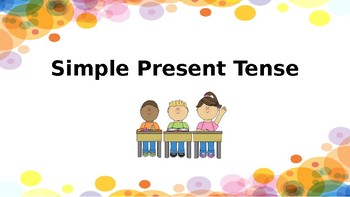



Simple Present Tense By Little Miss Mermaid Teachers Pay Teachers
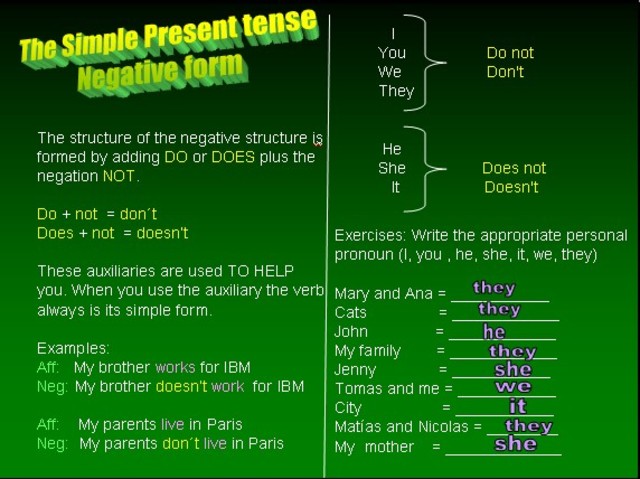



The Present Simple Tense Timeline Timetoast Timelines




16 Tenses In English Grammar Formula And Examples Examplanning
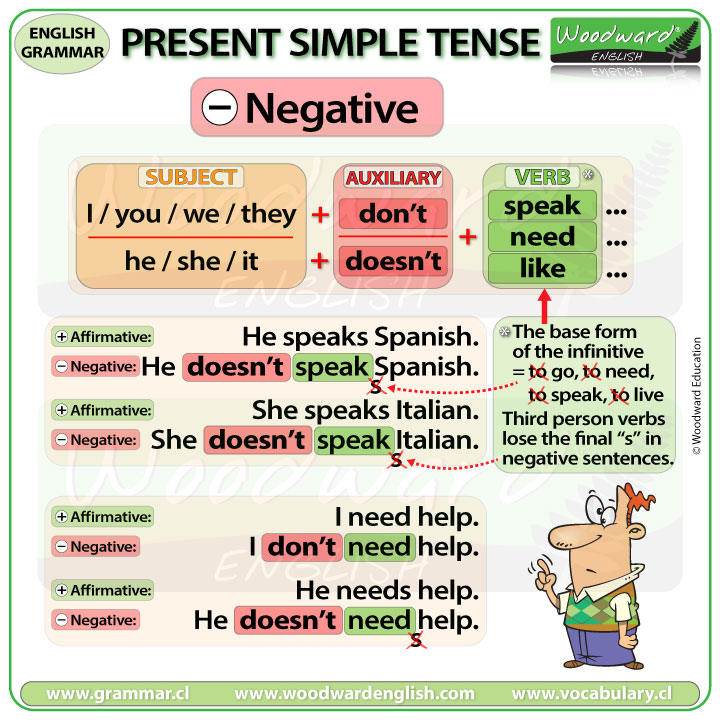



Present Simple Tense In English Woodward English




Negative Form Of Simple Present Tense Contractions Worksheet




Simple Present Tense Affirmative And Negative Forms English Esl Worksheets For Distance Learning And Physical Classrooms
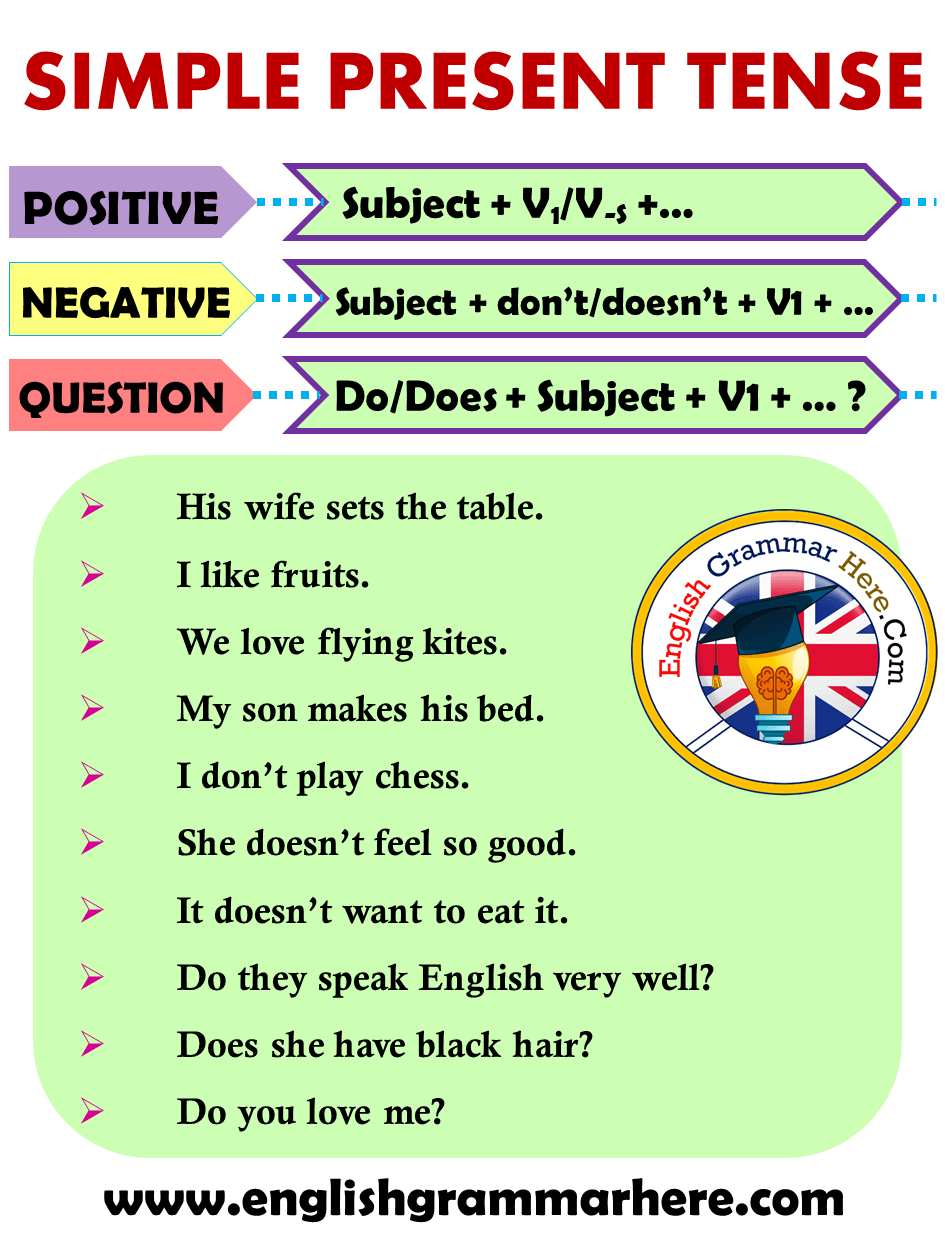



Simple Present Tense Formula In English English Grammar Here




9 Sentences Of Simple Present Tense English Study Here
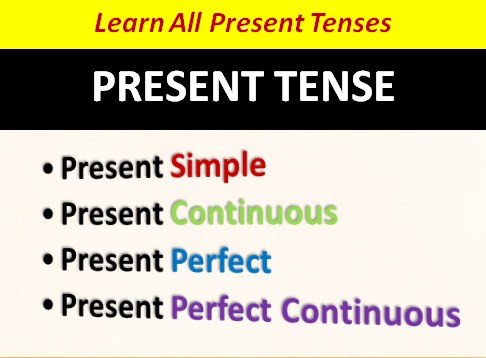



Present Tense Types With Examples
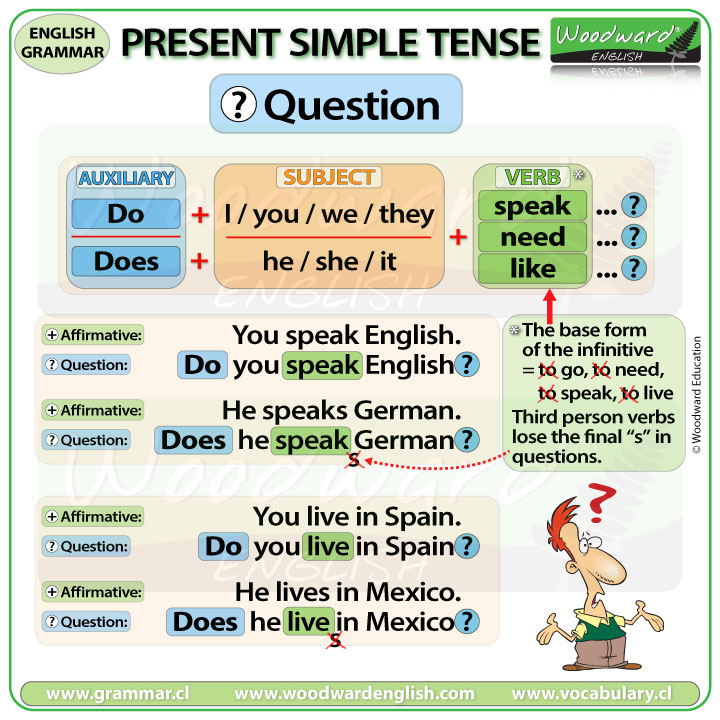



Present Simple Tense In English Woodward English




Esl Simple Present Tense Affirmative Form Youtube




Simple Present Tense Form Materials For Learning English
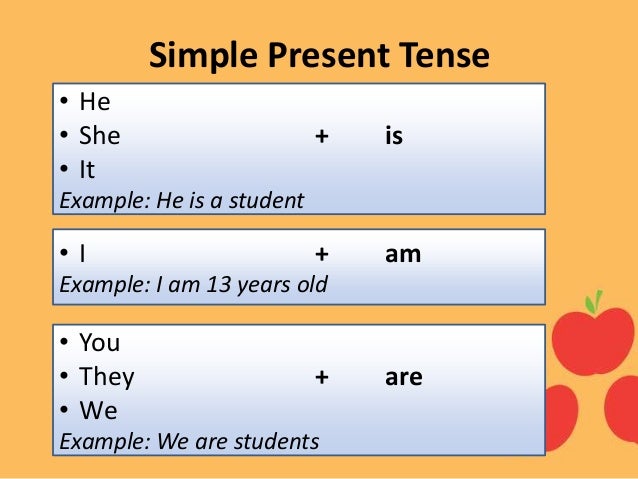



Simple Present Tense Positive Form
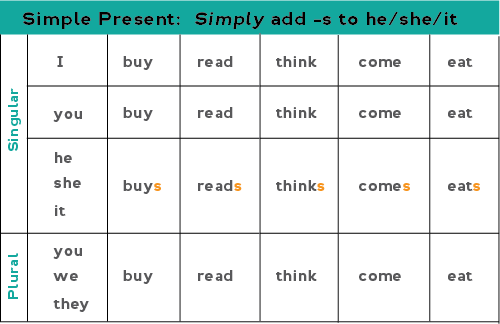



All About The Present Simple Tense
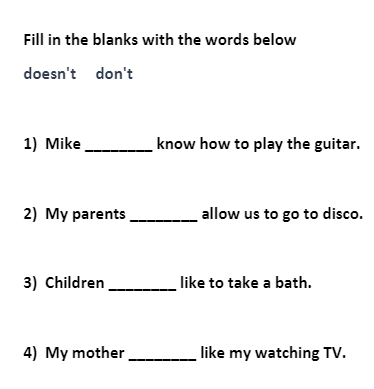



Simple Present Tense Negative Form Fill In Blanks Exercise No 21 Englishpedia Net
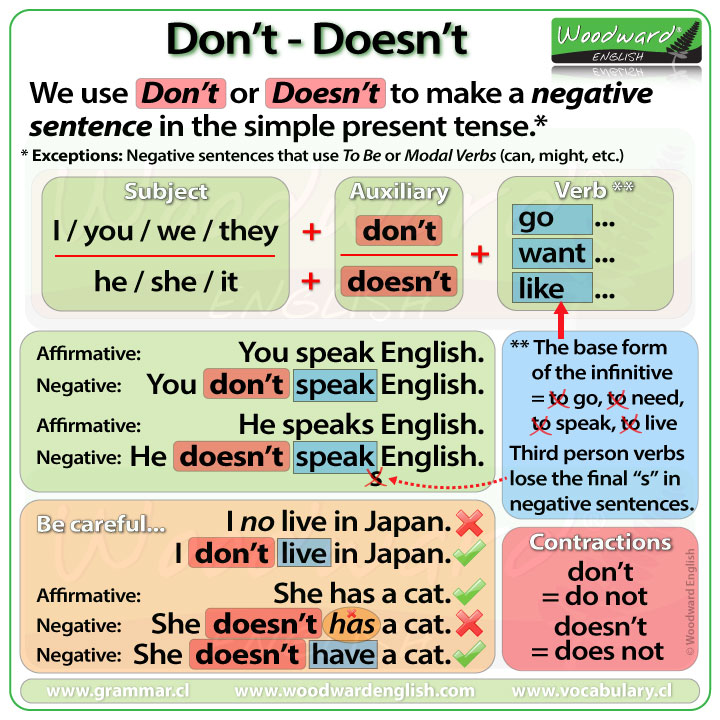



Don T And Doesn T In English Simple Present Tense Negative Sentences Woodward English




The Present Simple Tense Create Webquest




Simple Present Tense Formula Exercises Worksheet Examplanning




Simple Present Tense Form Function Susanenguaeu




Simple Present Tense English Grammar English Study Page




Simple Present Tense Form English Pdf Docs Simple Present Tense Grammar And Vocabulary Tenses




The Simple Present Tense Affirmative And Negative Form Worksheet
(125).jpg)



Soal Simple Present Tense Proprofs Quiz




English Grammar The Simple Present Give Instructions And Directions Learn English With Africa




Simple Present And Present Continuous Simple Present Tense Grammar Exercises English Grammar Exercises
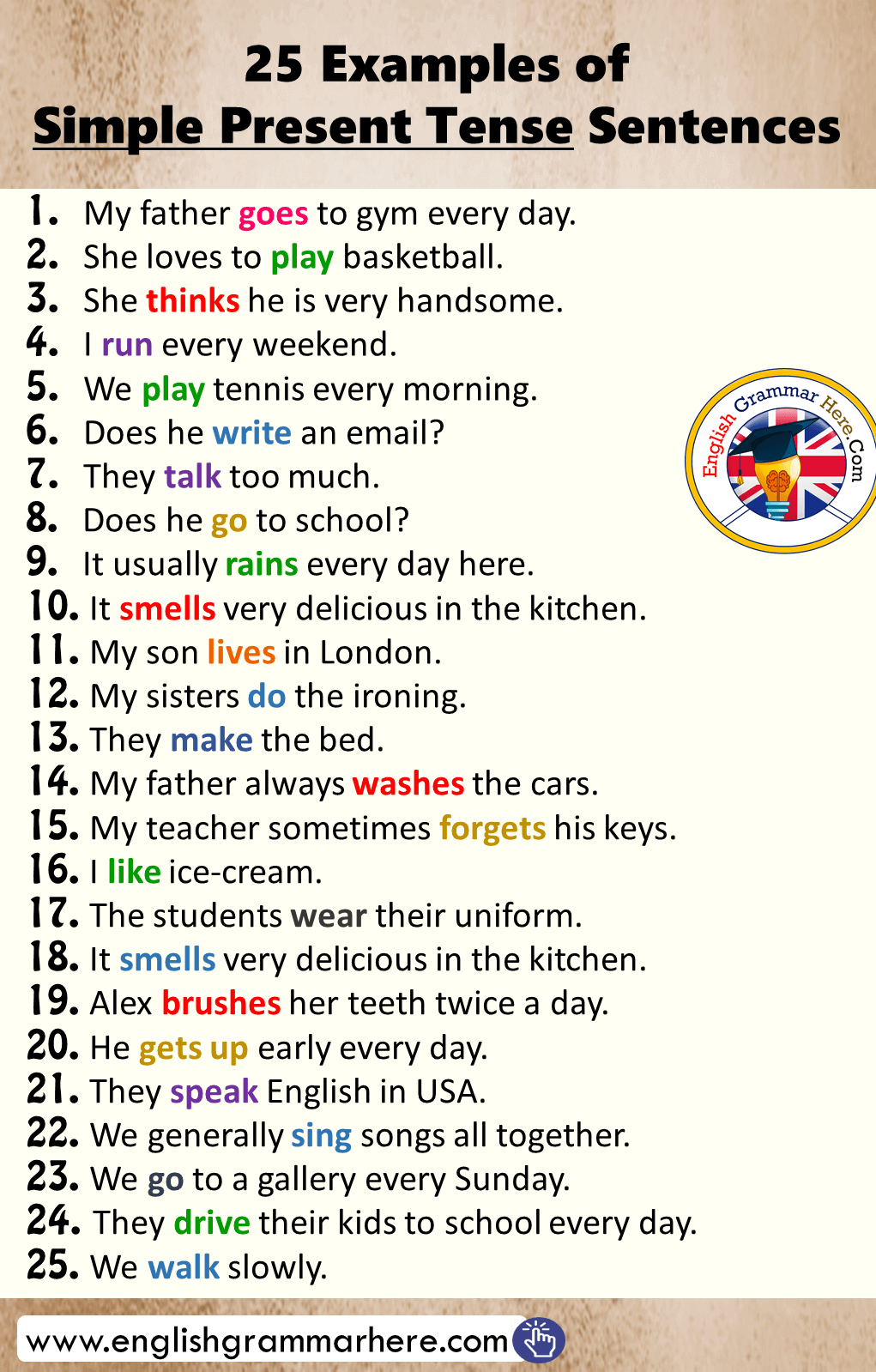



25 Examples Of Simple Present Tense Sentences English Grammar Here
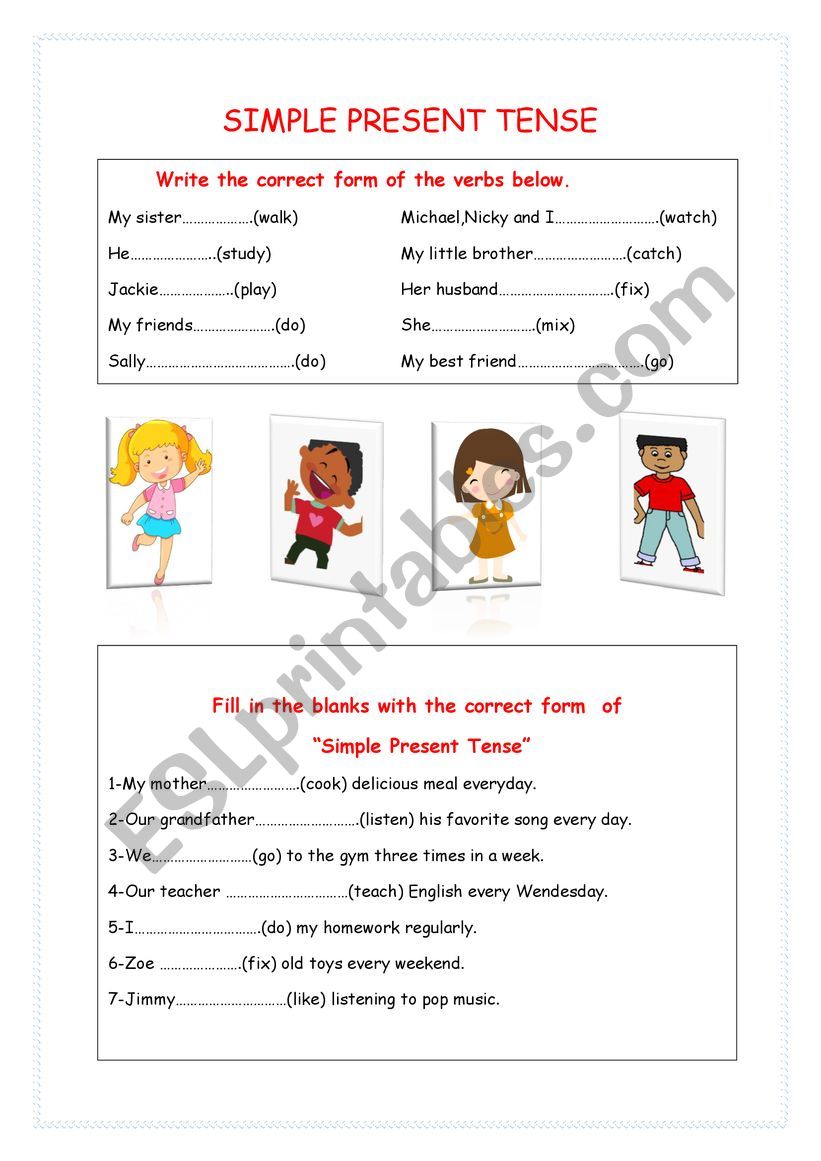



Present Simple Tense Esl Worksheet By Melikecomu




Simple Present Tense With Examples
/ThoughtCoChalkboard-5b2a9642fa6bcc0036305aa9.png)



The Present And Past Forms Of The Verb To Be
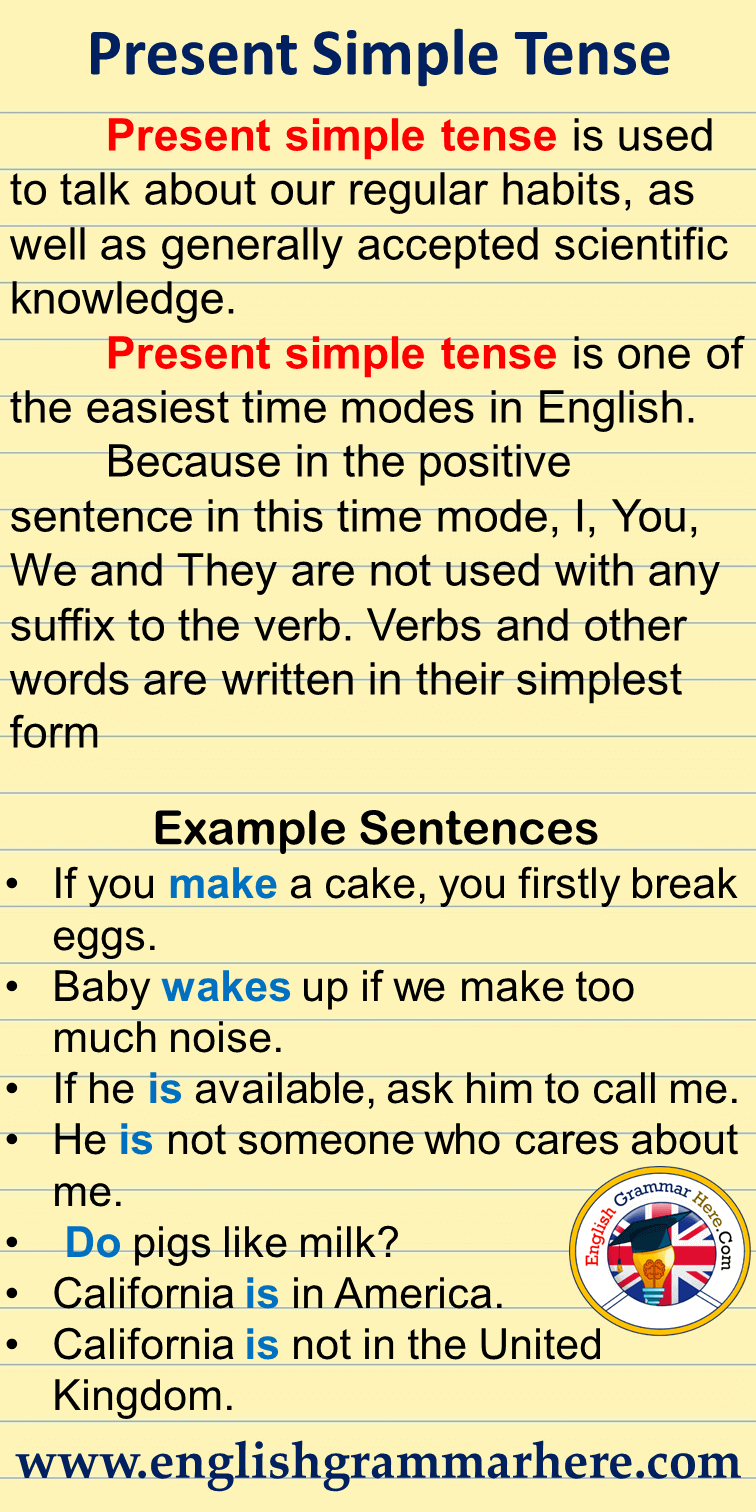



Present Simple Tense Notes And Example Sentences English Grammar Here




Present Simple Tense English With Lynn Tenses Simple Present Tense Tenses English
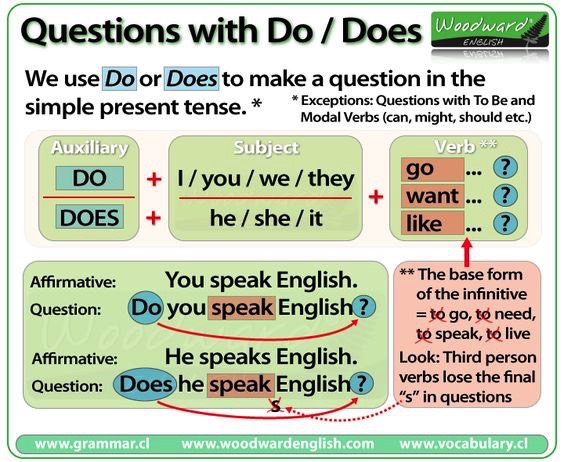



Verbs The Simple Present Sweet Level 1 Writing
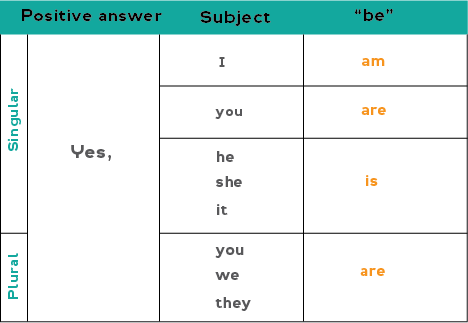



All About The Present Simple Tense




Simple Present Tense Ppt Download




Times Tenses And Referenceframes Chapter 5 Language Space And Mind




Simple Present Tense Learn English For Life
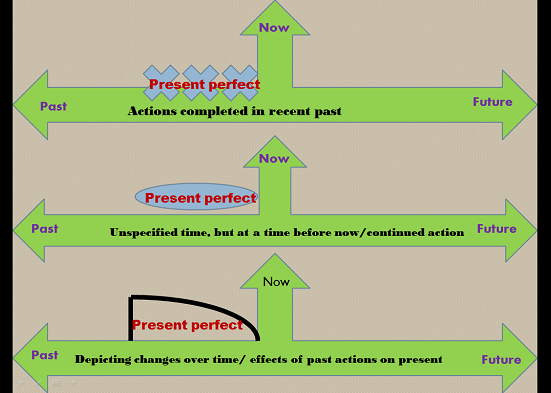



Simple Present Present Continuous And Present Perfect Effective English For Teachers




Simple Present Tense Youtube




Simple Present Tense Reading 1 Pdf




Verbs Present Tense Video Lessons Examples Explanations




Simple Present Tense In English English Study Here




Present Tense Kinds Structure Example Sentences English Grammar Vocabulary



1




Simple Present Tenses Definition And Example Sentences Lessons For English




Simple Present Tense Examples And Grammar 250 Sample Sentences And Questions The Learner S Nook
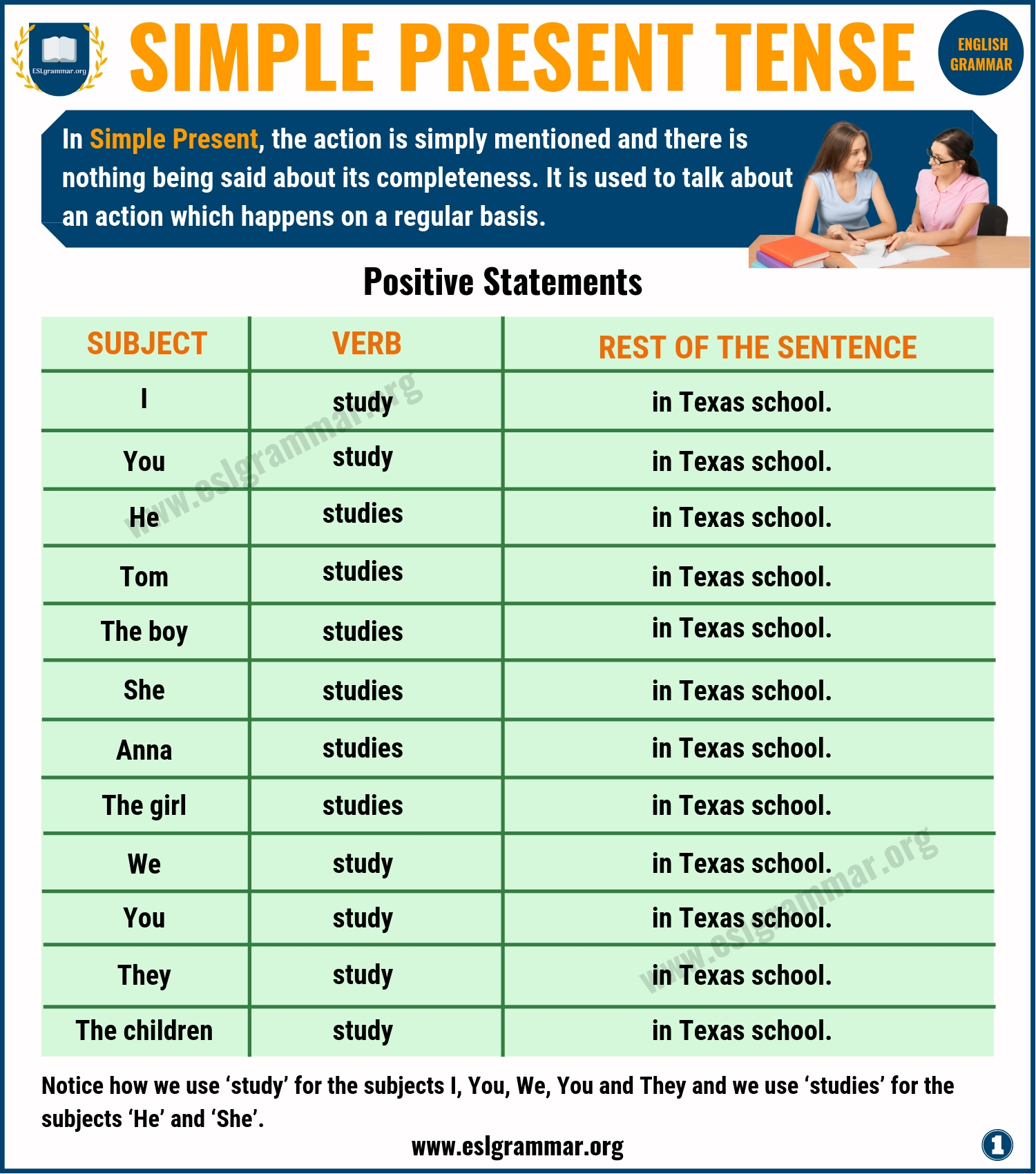



Simple Present Tense Definition And Useful Examples Esl Grammar




3 Example Of Nominal Simple Present Tense Source Download Scientific Diagram



1




Present Tense Verbs Examples And Practice




Simple Present Tense Plural Form Archives English Study Here




Simple Present Tense Rules
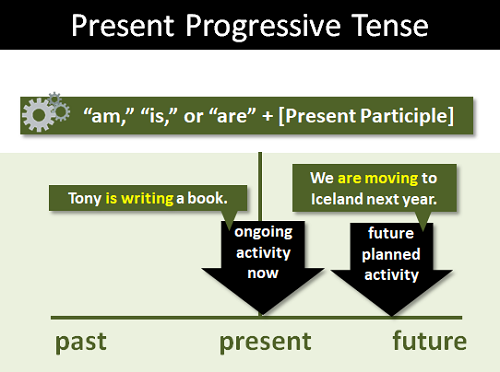



Present Progressive Tense What Is The Present Progressive Tense
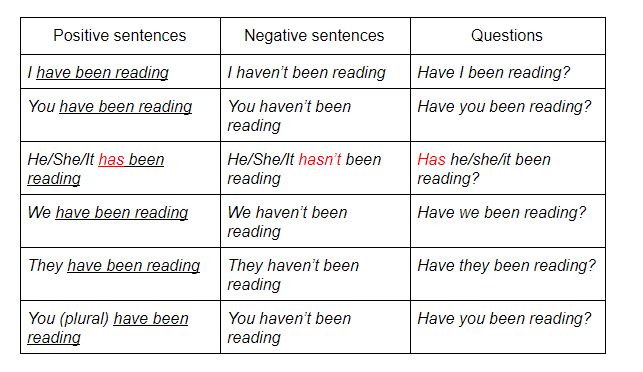



What Are The 4 Present Tenses In English And How Do You Use Them Oxford House Barcelona
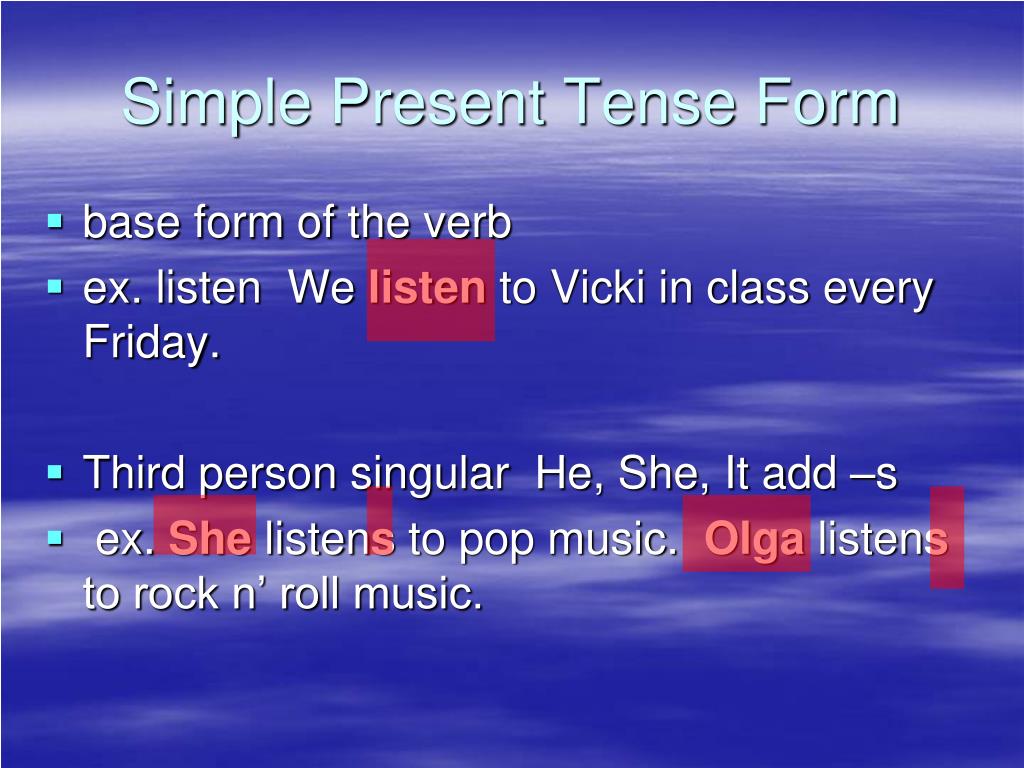



Ppt Simple Present Tense Form Powerpoint Presentation Free Download Id




The Simple Present Tense Useful Usage And Example Sentences Esl Forums



0 件のコメント:
コメントを投稿